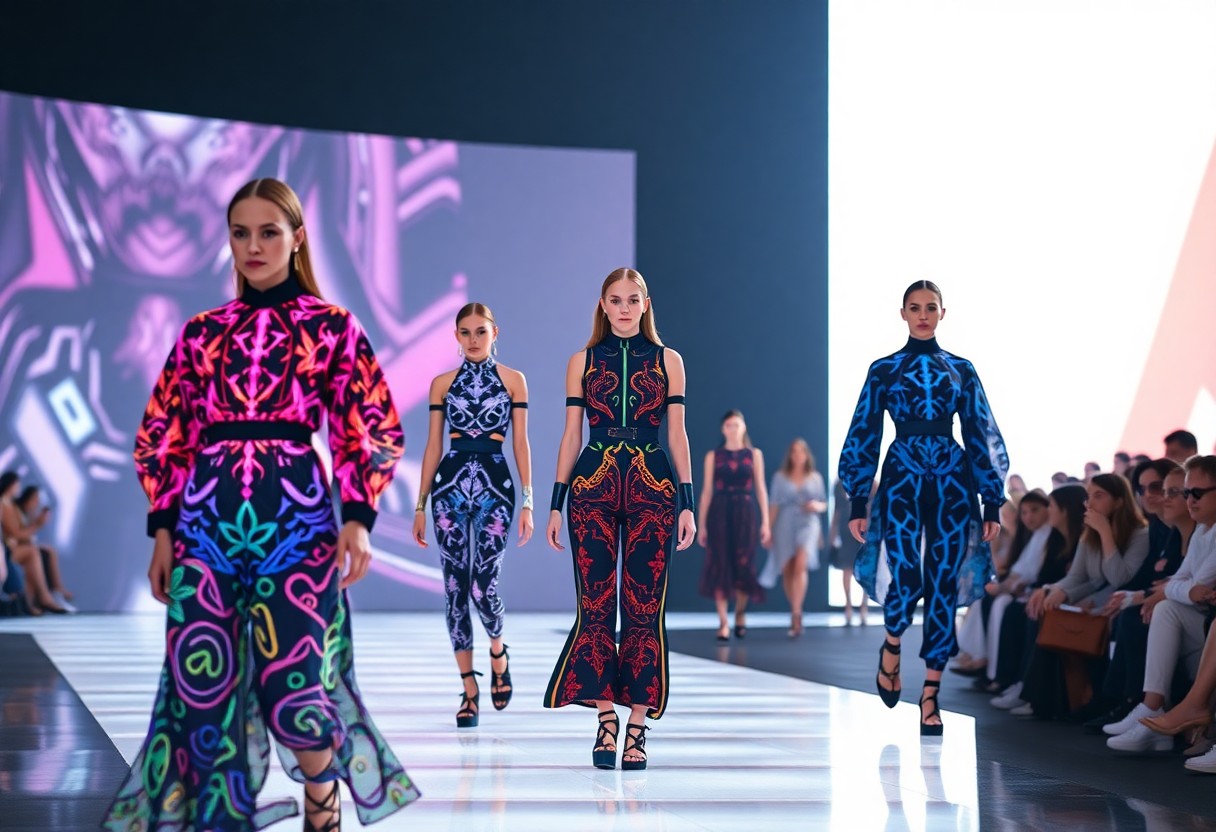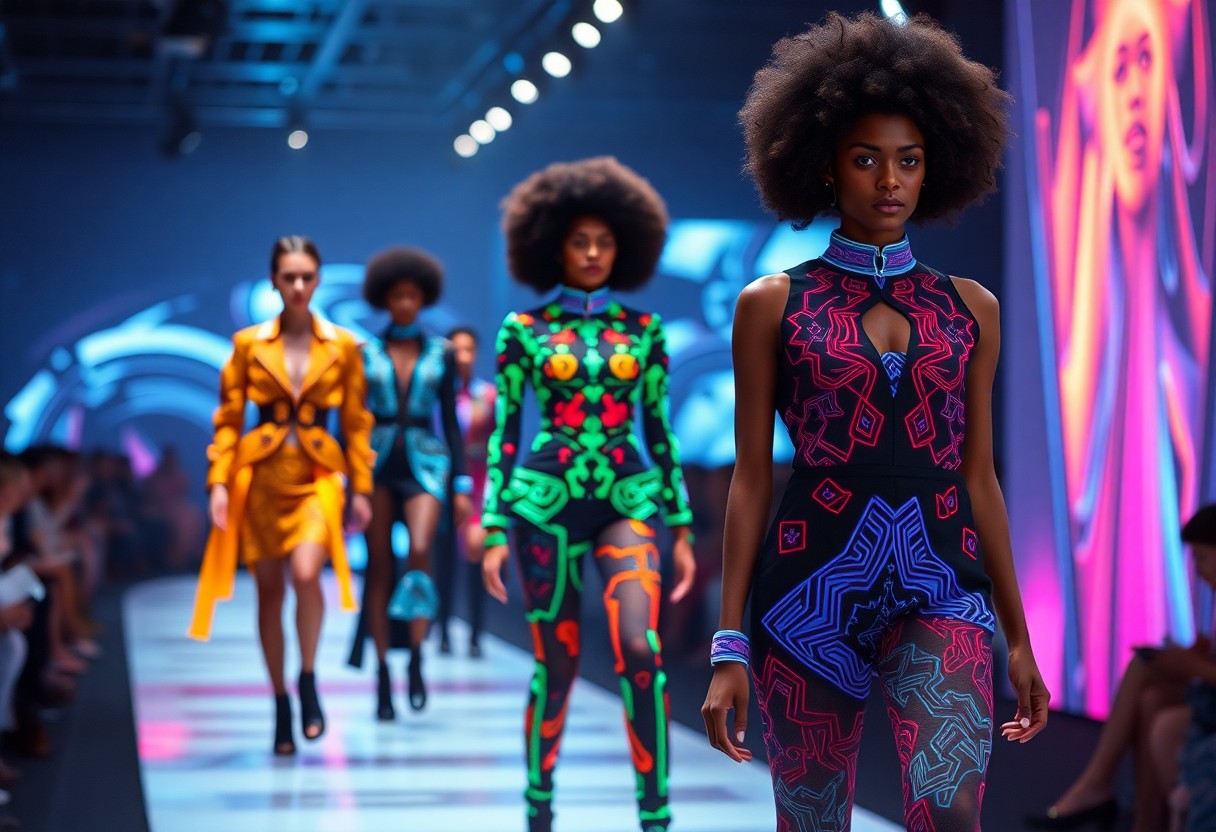14th May 2025
Digital Drip: How AI-Designed Fashion Is Revolutionizing 2025 Collections

Fashion is entering a new era where AI-designed collections are reshaping creativity and production. As you explore upcoming trends, you’ll see how artificial intelligence is not only enhancing design possibilities but also presenting complex challenges such as maintaining authenticity and craftsmanship. By understanding how AI tools are integrated into the 2025 collections, you gain insight into a rapidly evolving industry that balances innovation with the human touch, empowering your perspective on the future of style and technology.

The Rise of AI in Fashion Design
Before AI entered the fashion scene, design was constrained by the pace and imagination of human creators. Now, you witness a transformation where AI tools like Runway and Midjourney allow designers, like Lulu Li, to generate entire collections and runway visuals virtually before physical production begins. This evolution is not about replacing you but empowering your creativity by expanding what’s possible and overcoming traditional constraints in fashion design.
Historical Context
At the dawn of fashion technology, design relied heavily on manual craftsmanship and intuition, with limited digital assistance. The introduction of computer-aided design (CAD) revolutionized the field by offering precise pattern making and 3D modeling. However, early AI advancements truly began around 2020, when generative AI started creating fantastical, imaginative visuals, setting the stage for today’s AI-guided fashion innovation.
Current Applications
Before being mainstream, AI in fashion was primarily used for digital imagery and concept development. Now, you see projects like Moncler’s collaboration with Lulu Li, where AI-generated designs transition into physical ready-to-wear collections. AI helps you prototype, visualize, and refine garments, balancing creative ambition with technical feasibility — a leap from mere concept to market-ready apparel faster than ever.
Hence, AI’s impact stretches beyond visualization; it influences material choices, weight calculations, and construction details, as seen in Lulu Li’s work with Moncler. While AI can produce impractical design elements, your judgment remains imperative in refining these outputs. By guiding AI’s “infinite choices” within latent mathematical spaces, you harness its potential to break creative boundaries while maintaining control — a powerful synergy that challenges traditional design roles without sidelining human intuition.
Case Studies of AI-Designed Collections
Some pioneering AI-designed fashion collections showcase the transformative power of technology in fashion. Notable examples include Lulu Li’s Moncler capsule collection featuring 10 wearable pieces, broadcast globally from October 28, 2023. Her project combined AI tools like Runway and Midjourney to produce ready-to-wear garments, including a standout cream puffer gown exclusive to Harrods. These case studies demonstrate how AI enhances creativity while addressing practical challenges, with Moncler supporting the physical production through extensive technical collaboration and hands-on sample iteration in Milan.
Noteworthy Collaborations
Before AI tools became mainstream, creative partnerships like Lulu Li’s with Moncler were rare and experimental. Today, you see brands leveraging AI-generated designs alongside traditional teams, blending innovative aesthetics with technical expertise. This collaboration marked a significant shift by transforming AI-generated concepts into tangible garments that are commercially available worldwide, pushing boundaries on how designers and brands co-create with artificial intelligence.
Impact on Traditional Design Processes
Behind the emergence of AI in fashion design lies a fundamental change in how you approach creation. AI-generated designs may produce anomalies such as extra sleeves or impractical details, requiring careful human intervention to translate concepts into reality. You’ll find yourself balancing limitless digital possibilities with the material constraints and craftsmanship required for physical garments, fundamentally reshaping the planning and execution phases of fashion production.
This shift means that while AI can generate near-infinite options within latent mathematical spaces, your role as a designer becomes more about curating and guiding these iterations toward coherent, wearable designs. There’s a delicate tension between AI’s broad creative output and your personal taste and expertise, emphasizing collaboration over automation. However, this also introduces challenges: reliance on AI may risk losing traditional craftsmanship nuances or result in overdependence on machine-generated ideas, underscoring the need for maintaining human oversight throughout the design process.

Consumer Reception and Market Trends
If you’re watching the evolution of AI-designed fashion, it’s clear consumer reception is shifting rapidly. AI collaborations like Lulu Li’s Moncler collection show how digitally created designs are gaining credibility and excitement among buyers. As AI bridges virtual creativity with tangible products, you’ll notice increased demand blending innovation with craftsmanship. Market trends suggest shoppers are intrigued by the unique fusion of technology and style, driving AI fashion from a niche experiment to a mainstream force transforming the 2025 collections you see in stores.
Changing Perspectives on AI Fashion
About AI fashion, you may find perspectives evolving from skepticism to curiosity and appreciation. While AI-generated designs once felt like a novelty, artists like Lulu Li demonstrate that AI serves as a powerful creative partner rather than a replacement. You can embrace the idea that your style and taste remain central, guiding AI’s endless possibilities into meaningful, wearable fashion. This nuanced understanding helps you see AI tools as extensions of your artistic vision, enhancing rather than overshadowing your input.
Demographics and Buying Behavior
Any shopper exploring AI fashion today is typically younger, tech-savvy, and driven by curiosity about how innovation meets luxury. You might notice that early adopters appreciate limited-edition releases like the Moncler x Lulu Li capsules, often valuing exclusivity and storytelling behind AI collaborations. Their buying behavior favors experiences and authenticity, making your engagement with AI-designed pieces not just about clothing but about participating in a pioneering movement within fashion.
Market data indicates that 25–35-year-olds lead AI fashion purchases, blending digital fluency with demand for unique identity expression. However, the rapid adoption exposes brands like Moncler to potential risks such as overreliance on novelty or alienating traditional buyers. On the positive side, AI offers unprecedented customization and scalability, allowing you to access avant-garde designs previously limited by conventional fashion cycles. Understanding these dynamics can help you navigate this new landscape with confidence.

The Role of Technology in Creation
Not all fashion innovation comes from traditional design studios anymore. You see, AI-powered tools enable you to reimagine collections in ways previously unimaginable, allowing you to visualize entire runway shows and garments digitally long before they materialize. As showcased by Lulu Li’s collaboration with Moncler, technology doesn’t replace your creativity but amplifies it, helping you explore endless possibilities and overcome conventional constraints in fashion design.
Tools and Software for Designers
Between platforms like Runway and Midjourney, you gain access to powerful generative AI tools that start your design process from scratch or enhance existing ideas. These softwares can produce detailed fashion images and concepts, helping you simulate runway presentations and lookbooks. By integrating them into your workflow, you harness advanced capabilities that let you experiment freely while maintaining control over your creative vision.
Challenges of AI Integration
Before you fully embrace AI in your design process, you must navigate challenges such as AI hallucinations, where tools generate unrealistic features like extra sleeves or undefined elements. Adapting these outputs requires both technical understanding and a discerning eye to ensure practicality without losing artistic intent. Additionally, you face the technical complexities of translating digital designs into real-life garments, often necessitating collaboration with experts to perfect materials and construction.
Integration of AI into fashion design presents a fascinating blend of opportunity and difficulty. While you benefit from almost infinite creative options within a latent mathematical space, you must carefully filter and refine AI outputs to avoid impractical or nonsensical designs. This process demands keen judgment and often collaboration with skilled technicians, especially when dealing with materials, weight, and comfort as Lulu Li experienced working with Moncler. At the same time, the potential to revolutionize your workflow and expand creative boundaries is immense, offering a new paradigm where your taste and decision-making remain at the core of the final product.
Sustainability and Ethical Considerations
Unlike traditional fashion design, AI-driven collections offer you a unique opportunity to reduce waste by optimizing materials and production processes digitally before creating physical garments. This technology helps you explore new creative possibilities while aligning with growing consumer demand for more sustainable and ethically conscious fashion. As AI reshapes how you approach design and manufacturing, you play a key role in promoting transparency and responsibility in the industry.
Environmental Impacts
Considerations around environmental impact are central to AI-designed fashion. By simulating collections digitally, you can significantly cut down on the overproduction and sample waste typical in traditional fashion cycles. This reduction not only helps to lower your carbon footprint but also minimizes resource consumption like water and energy, offering a way to align your brand with eco-friendly practices that consumers increasingly expect.
Labor and Production Ethics
One of the most important advantages AI brings is the potential to rethink labor practices. With AI helping design and prototype remotely, you gain the ability to create garments using more ethical production methods, avoiding some exploitative fast-fashion labor conditions. This shift allows you to partner with factories that prioritize fair treatment, ensuring that your collections are both innovative and ethically sourced.
But while AI can alleviate some ethical concerns by reducing reliance on low-wage labor and improving supply chain transparency, it also raises questions about job displacement in traditional roles. You should be aware that, as Lulu Li pointed out, while AI enhances creativity and efficiency, it does not eliminate the need for skilled human input—collaboration remains important. Balancing technology use with supporting artisans and craftspeople helps you foster a more inclusive, responsible fashion ecosystem.
The Future of AI in Fashion
Once again, AI is reshaping how you experience fashion by bridging the gap between imagination and reality. As AI tools evolve, they enable designers like Lulu Li to transform visionary digital concepts into tangible collections, making the future of fashion more accessible and innovative than ever. You will witness AI not as a replacement but as a powerful collaborator, helping you explore endless design possibilities and redefining creative boundaries in 2025 and beyond.
Predictions for the Next Decade
Fashion is set to integrate AI more deeply, where your creative decisions will increasingly guide intelligent systems producing customized designs. Expect AI to streamline production, improve sustainability by reducing waste, and offer personalized experiences that adapt to your style preferences. While the technology presents exciting opportunities, you will also need to navigate challenges related to originality and ethical use in a rapidly evolving landscape.
Potential Innovations on the Horizon
Predictions point to AI advancing beyond design assistance into fabric innovation, virtual fitting rooms, and hyper-personalized fashion. You could soon engage with AI systems that simulate textures and materials precisely or preview garments in augmented reality before buying. These developments promise greater creativity and convenience, but also raise concerns around data privacy and the impact on traditional craftsmanship.
Next, as AI tools become more sophisticated, they will empower you to co-create with machines in unprecedented ways. Imagine AI not only generating designs but optimizing them for sustainability—calculating material weights, cushion sizes, and production techniques as seen in Lulu Li’s Moncler collaboration. This synergy between human taste and AI’s infinite possibilities offers a transformative potential that balances efficiency with creative control, while you stay at the helm guiding the final look step by step. However, staying mindful of these tools’ limitations will be necessary as you navigate this dynamic space.
Summing up
Now, as you explore the evolving landscape of fashion, AI-designed collections like those pioneered by Lulu Li demonstrate how technology reshapes creativity and production. You see how AI tools can expand your creative possibilities, enabling you to visualize and refine designs faster while maintaining your unique style. By embracing AI, you position yourself at the forefront of innovation, capable of overcoming traditional limitations and collaborating with new forms of digital craftsmanship to redefine the future of fashion.
